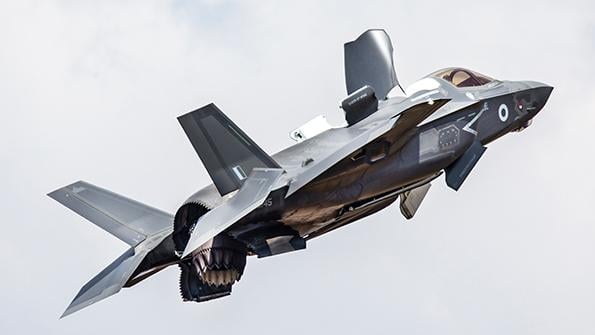Editorial: UK Defense Plan Makes Hard Choices Now For Future Gains

All across Europe, NATO members are spending more on defense—nearly 4% more in real terms from 2019 to 2020, according to the alliance’s latest report. So it perhaps seems counterintuitive that the UK, one of its most stalwart members, is cutting back on capabilities in spite of a planned £24 billion ($33 billion) uptick in defense spending over the next four years. Prime Minister Boris Johnson’s Integrated Review of Security, Defence, Development and Foreign Policy has called for a pivot to the Far East and spending on new technologies, cyber, uncrewed systems, hypersonic missiles and directed-energy weapons. But the review took a grim reaper’s scythe to some of the UK’s most vaunted capabilities—combat air, air mobility and, most crucially, intelligence, surveillance and reconnaissance (ISR) fleets—to pay for the pivot.
The UK’s Boeing E-3 Sentry fleet will be retired early, resulting in an airborne early warning (AEW) capability gap of two years. And when its replacement, the Boeing E-7 Wedgetail, arrives, it will be purchased in painfully small numbers—just three instead of the originally planned five. The UK has been struggling with its AEW fleet due to underinvestment for the last decade, but drastically shrinking a fleet that is essential to the wider NATO AEW force sends alarmingly mixed messages.
Also retired at the end of March was the UK’s Raytheon Sentinel wide-area surveillance platform, which means that by year-end the UK will have retired two key types from its much-tasked ISR fleets.
The UK’s stated ambition to play a greater role on the post-Brexit world stage as “Global Britain” inevitably raises questions about the cuts in air mobility. Retiring the Lockheed C-130J Hercules reduces the UK airlifter fleet by 25% and forces it to rely on the still immature and troubled Airbus A400M. This contrasts starkly with Franco-German plans for a joint squadron of C-130Js because they believe the A400M is too big and vulnerable for certain missions, particularly those for special forces.
But with the Royal Air Force so slimmed down since the end of the Cold War and the only true way to make savings being to cut entire fleets, there were not many options left. The commitment to buy 138 Lockheed F-35 Joint Strike Fighters, made in the 2015 defense review, appears to have been pushed into the long grass. The UK will still buy more than its current order for 48 aircraft, but final numbers will likely dwindle to 60-80 over the life of the program.
It is easy to focus on the bad news, but the reality is that the UK had to make difficult choices. Successive reviews have often promised much and not matched the ambitions with funding. The authors of the integrated review should be applauded for trying to address that gap.
Cuts in the Eurofighter Typhoon force mean upgrades including a new radar and weapons can be made to keep the fleet relevant into the 2030s. Retiring entire fleets, such as the now elderly Hawk T1 jet trainer, can generate major savings, more than can be gained by just slicing around the edges.
Increased research and development funding will bolster UK industry, particularly as the new Defence and Security Industrial Strategy calls for a move away from a policy of competition by default and prioritizes UK industrial capability where required.
UK aerospace will benefit through the Tempest Future Combat Air System initiative, government spending on which is outstripping that of the rival European FCAS program. But the Tempest is still four years away from entering a development phase, when spending levels will need to rise drastically. Although Whitehall’s new £1.2 billion commitment to Team Tempest seems impressive, it is a fraction of what is required to deliver the successor to the Typhoon and Lightning II.
There is a rationale for making cuts now to afford future capabilities. But there also are dangers in making heavy investments in new generations of technologies that might not pay off, leading to a further hollowing of capability. The UK is trying to balance on that edge but must watch its steps with great care.




